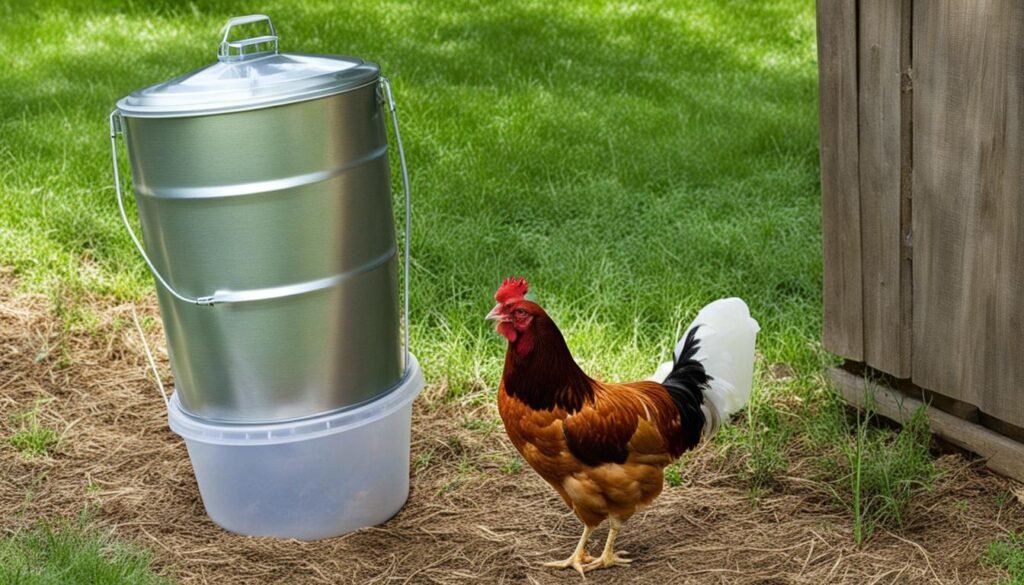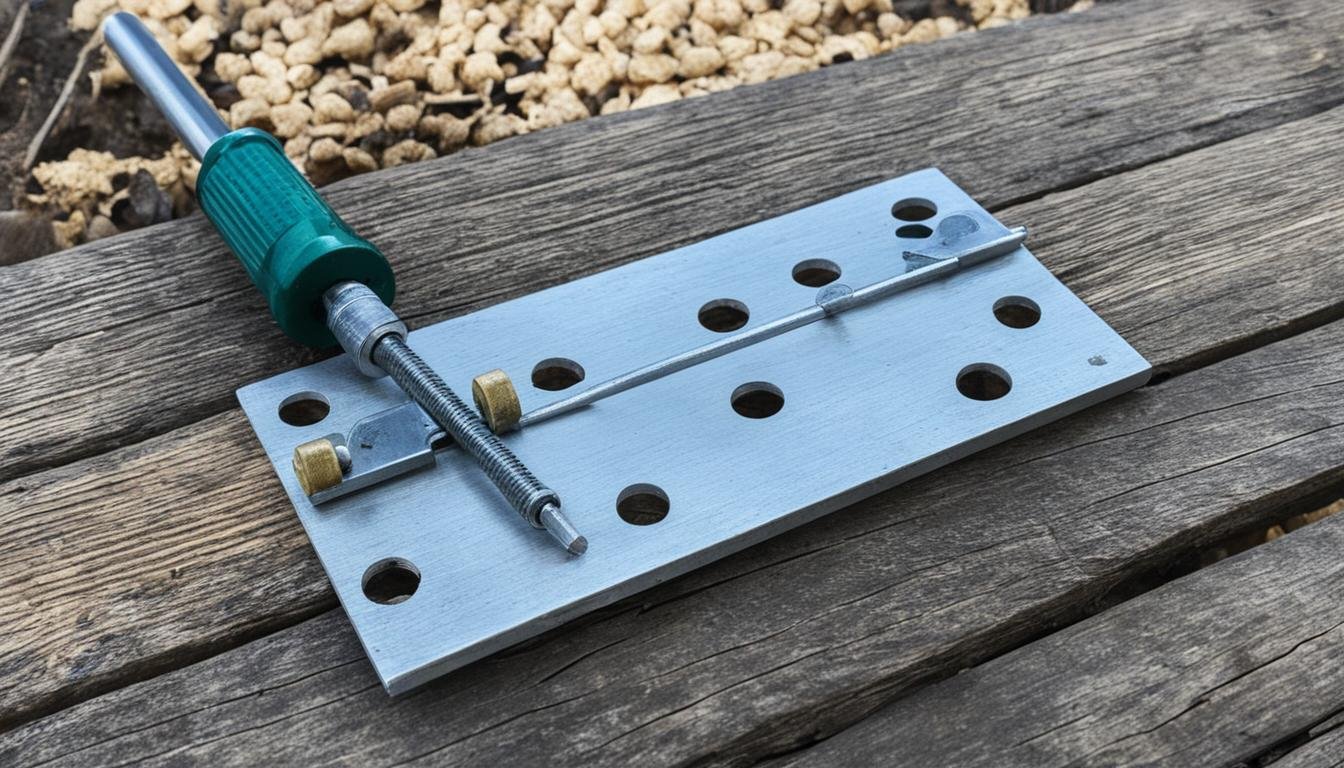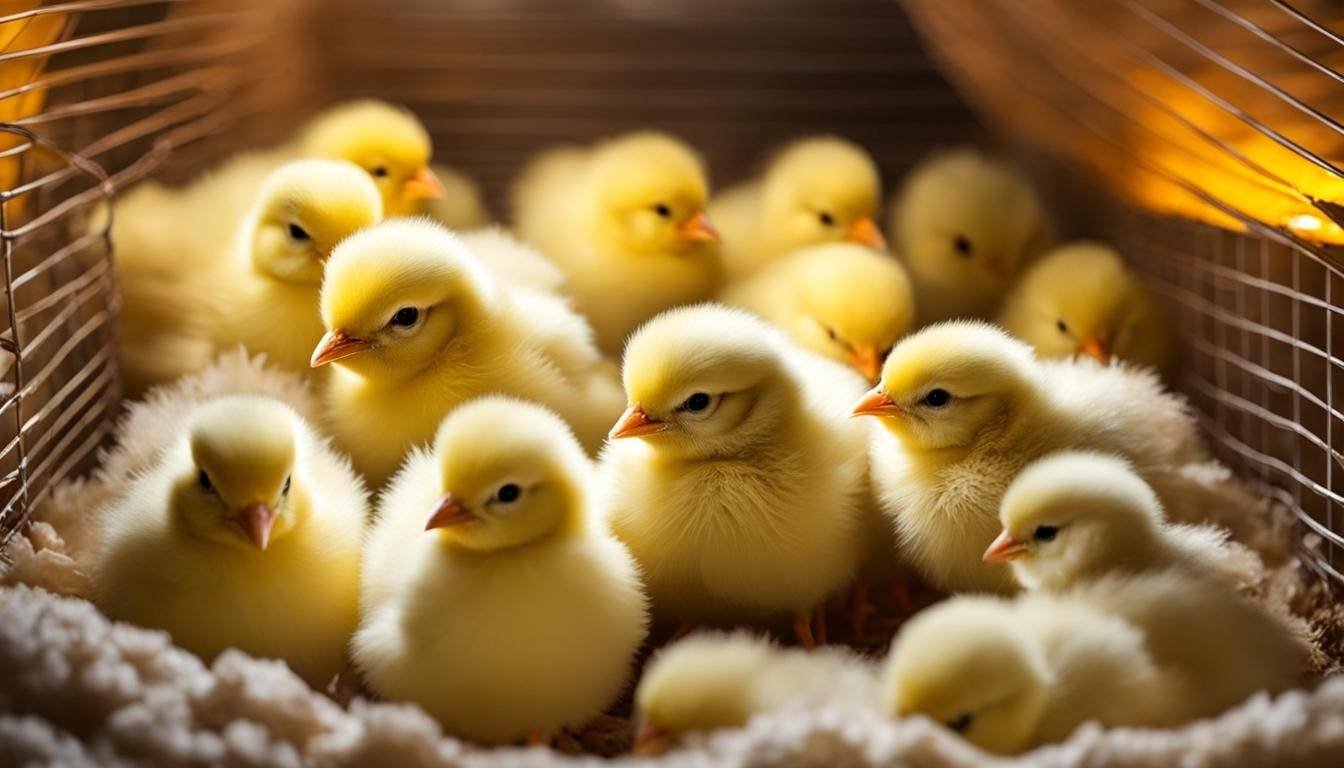Welcome to our comprehensive guide on creating a DIY chicken waterer. In this article, we will walk you through the easy steps and provide useful tips for making your own homemade chicken waterer. By following our guide, you can save money and ensure that your flock always has access to fresh water.
Creating a DIY chicken waterer is a simple and affordable solution for chicken owners. By using easily available supplies, such as a 5-gallon bucket and chicken nipple plugs, you can create a gravity-based waterer that will keep your chickens hydrated and healthy. With just a little effort and in less than an hour, you’ll have a reliable and efficient waterer for your feathered friends.
In this guide, we will provide step-by-step instructions on how to create your own DIY chicken waterer. We will also highlight the benefits of using a homemade waterer and share essential tips for making it stable. Additionally, we will discuss the potential benefits of adding apple cider vinegar to your chicken’s water and explain the long-term advantages of choosing a DIY waterer over pre-made options.
So, whether you’re a beginner or an experienced chicken owner, join us on this informative journey to learn how to make your very own DIY chicken waterer. Let’s get started!
Step-by-Step Guide on How to Create DIY Chicken Waterer
Follow these easy steps to create your own DIY chicken waterer. Start by cleaning and emptying a 5-gallon bucket, making sure it is free from any cracks or holes. Use a sharpie to mark six holes around an inch from the bottom of the bucket for the chicken nipple plugs. Drill these holes using a 5/16th drill bit. Drill at least one hole in the lid of the bucket for air flow. Attach the chicken nipple plugs and check for leaks. If there are any leaks, tighten the plugs further. Finally, add water to the bucket, cover it with the lid, and place it in the coop.
Creating a DIY chicken waterer requires just a few simple steps. By repurposing a 5-gallon bucket and adding chicken nipple plugs, you can provide your flock with a reliable and efficient water source. This gravity-based system ensures that your chickens have access to fresh water without the risk of contamination or spills.
Here is a breakdown of the step-by-step process:
- Clean and empty a 5-gallon bucket, ensuring there are no cracks or holes.
- Use a sharpie to mark six holes around an inch from the bottom of the bucket.
- Drill the marked holes using a 5/16th drill bit.
- Drill at least one hole in the lid of the bucket for air flow.
- Attach the chicken nipple plugs to the drilled holes.
- Check for any leaks and tighten the plugs if necessary.
- Add water to the bucket.
- Cover the bucket with the lid.
- Place the DIY chicken waterer in the coop for your chickens to enjoy.
By following these simple steps, you can create a cost-effective and functional DIY chicken waterer for your backyard flock. It’s a practical solution that ensures your chickens stay hydrated and healthy.
Benefits of a DIY Chicken Waterer
Using a DIY chicken waterer offers numerous advantages for chicken owners. Whether you’re looking to save money or customize your waterer to fit your specific needs, creating your own homemade poultry waterer can be a rewarding and practical solution. Let’s explore the benefits in detail:
Affordable Option
One of the primary benefits of a DIY chicken waterer is its cost-effectiveness. By making your own waterer, you can save money compared to purchasing a pre-made one. The materials required for a homemade poultry waterer, such as a 5-gallon bucket and chicken nipple plugs, are relatively inexpensive and readily available. This DIY approach allows you to provide your flock with a reliable water source without breaking the bank.
Customizable Design
Another advantage of a do-it-yourself chicken waterer is the ability to tailor the size and design to meet your specific requirements. You can choose the capacity of the waterer based on the size of your flock and their daily water consumption. Additionally, you have the freedom to select materials that are safe, durable, and suitable for your chickens. This customization ensures that your waterer perfectly meets the unique needs of your feathered friends.
Constant Fresh Water Supply
A DIY chicken waterer typically utilizes a gravity-based system, ensuring a continuous and fresh water supply for your chickens. This can significantly contribute to their overall health and well-being. With a homemade waterer, you can provide your flock with clean, uncontaminated water, reducing the risk of waterborne illnesses. The constant availability of fresh water helps keep your chickens hydrated and supports proper digestion and egg production.
Complete Material Control
Creating your own chicken waterer allows you to have full control over the materials used. This is particularly important when it comes to the safety and well-being of your chickens. By using quality materials and ensuring that they are free from harmful substances, you can ensure that your flock’s water source is safe and appropriate. With a DIY chicken waterer, you have peace of mind knowing that your feathered friends are drinking water from a reliable and healthy source.
By considering the benefits of a DIY chicken waterer, you can make an informed decision for providing your flock with a practical water solution. From cost savings to customization and enhanced water quality, a homemade poultry waterer offers numerous advantages for both you and your chickens.

Tips for Making a Stable DIY Chicken Waterer
Keeping your DIY chicken waterer stable is essential to prevent tipping or spilling. Here are some helpful tips to ensure the stability of your homemade chicken waterer:
- Use a heavy base: To make it more difficult for chickens to tip over the waterer, select a weighted container as the base. This will provide stability and prevent any accidental spills.
- Choose a low-profile design: Opt for a waterer with a low center of gravity, making it harder for chickens to grip and tip. This design will make it more stable and less prone to tipping.
- Place the waterer on level ground: Position the chicken waterer on a flat and level surface to ensure maximum stability. Avoid uneven terrain or areas where the waterer might become unbalanced.
- Secure the waterer: To prevent any movement or tipping, consider securing the waterer to the ground. You can use a bungee cord or stake to anchor the waterer securely.
- Maintain a full waterer: Keeping the waterer filled to its maximum capacity will make it heavier and more stable. This will reduce the chances of tipping over, even during chicken interaction.
By following these tips, you can create a sturdy and reliable DIY chicken waterer that will keep your flock hydrated without any hassle or mess.

| Tip | Description |
|---|---|
| Use a heavy base | Select a weighted container as the base to make it difficult for chickens to tip over the waterer. |
| Choose a low-profile design | Opt for a waterer with a low center of gravity to make it harder for chickens to grip and tip. |
| Place the waterer on level ground | Position the chicken waterer on a flat and level surface to ensure maximum stability. |
| Secure the waterer | Consider using a bungee cord or stake to anchor the waterer securely and prevent any movement or tipping. |
| Maintain a full waterer | Keep the waterer filled to its maximum capacity to make it heavier and reduce the chances of tipping over. |
Using Apple Cider Vinegar in Chicken Water
Adding a small amount of apple cider vinegar to your chicken’s water can have some potential benefits. It promotes good digestive health, boosts the immune system, and may help reduce the risk of internal parasites. However, it should be used in moderation and not as a replacement for proper nutrition and care.
To incorporate apple cider vinegar into your homemade poultry waterer, follow these easy steps:
- Choose a raw, unfiltered apple cider vinegar that contains “the mother” for maximum benefits.
- Add a tablespoon or two of apple cider vinegar per gallon of water in the waterer.
- Mix well to ensure proper distribution of the vinegar throughout the water.
- Monitor your chickens’ behavior and health to determine if they respond positively to the apple cider vinegar.
It’s important to note that while apple cider vinegar can provide some advantages, it should not be relied upon as the sole solution for your chickens’ health. Proper nutrition, hygiene, and regular veterinary care are crucial for their overall well-being.
Remember, a happy and healthy flock relies on a balanced approach to care.
Benefits of Using Apple Cider Vinegar in Chicken Water
| Benefit | Description |
|---|---|
| Promotes Digestive Health | Supports a healthy gut flora in chickens, aiding in digestion and nutrient absorption. |
| Boosts the Immune System | The acetic acid content in apple cider vinegar can help strengthen chickens’ immune systems and improve disease resistance. |
| May Reduce Risk of Internal Parasites | Apple cider vinegar is believed to create an unfavorable environment for internal parasites, potentially reducing the risk of infestation. |
Adding apple cider vinegar to your chicken’s water can be a beneficial addition to your homemade poultry waterer. It’s important to observe your chickens closely and adjust the amount of vinegar if necessary. With proper care and attention, you can enhance the overall health and well-being of your flock.
The Long-Term Benefits of DIY Chicken Waterer
By opting for a DIY chicken waterer, you can enjoy long-term benefits. Unlike pre-made waterers that can break or become brittle over time, a DIY waterer made from a 5-gallon bucket and chicken nipple plugs is more durable and cost-effective. With proper care and maintenance, these waterers can last for years, saving you money in the long run. Additionally, the simple design makes it easy to clean and refill, ensuring your chickens always have access to fresh, clean water.
- Durability: DIY chicken waterers made from sturdy materials like a 5-gallon bucket and chicken nipple plugs are designed to withstand the test of time. Unlike commercial options that may crack or break, these homemade waterers can provide reliable water access for your flock for years.
- Cost-Effectiveness: Creating your own chicken waterer can save you money compared to purchasing pre-made options. The main components needed – a 5-gallon bucket and chicken nipple plugs – are affordable and readily available. This cost-effective solution can be a budget-friendly choice for chicken owners.
- Easy Maintenance: Maintaining a DIY chicken waterer is simple and hassle-free. The straightforward design allows for easy cleaning and refilling. With regular care and maintenance, you can ensure a constant supply of fresh water for your feathered friends.
Investing the time and effort to build a DIY chicken waterer is a worthwhile endeavor that offers long-term benefits. With a durable and cost-effective waterer, you can provide your chickens with the essential resource they need for their health and well-being.
Conclusion
In conclusion, creating a DIY chicken waterer is a practical and cost-effective solution for ensuring the hydration of your flock. By following the step-by-step guide outlined in this article, you can easily make a gravity-based waterer using a 5-gallon bucket and chicken nipple plugs. This homemade chicken waterer offers several benefits, including cost savings, customization options, and a consistent supply of fresh water for your chickens.
By implementing stability measures such as a heavy base and low-profile design, you can prevent tipping or spilling of the waterer. Additionally, adding a small amount of apple cider vinegar to the water can provide potential benefits for your chickens’ digestive health and immune system.
With a DIY poultry waterer, you have control over the materials used and can ensure the safety and suitability for your flock. Not only is it durable and long-lasting, but it also offers easy cleaning and refilling. By taking the DIY approach, you can have a reliable and efficient waterer that meets the specific needs of your backyard chickens.





